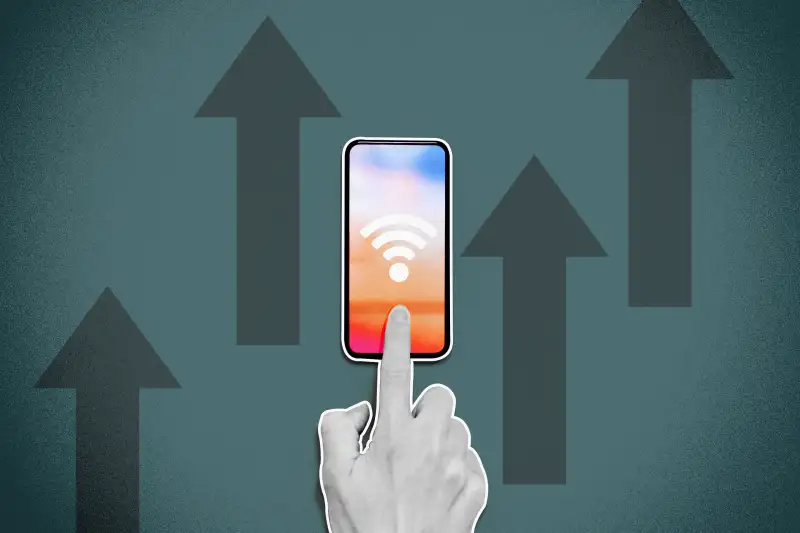Phone Bill Higher Than Normal? Wireless Taxes and Fees Just Hit a New Record

Your cellphone bill is probably higher this year — even if your wireless company didn't raise the monthly rate. That’s because wireless taxes and fees have surged to an all-time high.
According to a new report by the Tax Foundation, a nonprofit think tank, the national average tax rate for wireless services in 2021 is 24.96%.
This marks the fourth consecutive year of increases and the highest rate ever, the study found. In 2020, the national rate was 22.6%. Consumers will pay $11.3 billion overall in taxes and fees for wireless services (including cellphone plans) in 2021.
“A typical American household with four cellphones on a ‘family share’ plan, paying $100 per month for taxable wireless service, would pay nearly $300 per year in taxes, fees, and government surcharges—up from $270 in 2020,” the report stated.
The study also notes that the increased tax burden isn’t distributed evenly. Location is a major factor.
The federal rate for wireless services in 2021, according to the study, is 11.8%. This rate includes taxes, fees and government surcharges. On top of that, each state adds on its own taxes and fees, and the majority of those are higher than the federal rate.
States with the highest combined federal, state and local rates include:
• Illinois: 34.56%
• Arkansas: 32.04%
• Washington: 31.81%
• Nebraska: 31.36%
• New York: 30.73%
The following states have the lowest combined rates:
• Virginia: 19.12%
• Montana: 18.66%
• Delaware: 18.55%
• Nevada: 15.53%
• Idaho: 14.63%
The rate increase comes at a time when Americans are relying more heavily on wireless services to work, shop and access government services and health care due to the pandemic.
The report notes that at the end of 2020, 65% of all American adults used wireless-only phone services. In other words, they didn’t have landlines. For lower-income adults, that number was higher: 74%.
This disparity prompted the authors of the report to describe wireless taxes and fees as “regressive,” which means that they disproportionately burden lower-income individuals.
How to keep your phone bill low
Taxes and fees are unfortunately unavoidable if you want wireless phone services. But there are a few strategies you can use to keep your overall cellphone bill down.
• Turn on auto pay and/or paperless billing. Many major carriers, including AT&T, Verizon and T-Mobile, offer discounts if you enroll in automatic-payment programs with qualifying bank accounts, debit cards or credit cards. Discounts may vary between $5 and $15 per month. This alone could offset the rise in wireless taxes.
• Change your current wireless plan. The pandemic has changed how we use our devices, so be sure that your current cellphone plan matches your behavior. For example, if you primarily use Wi-Fi instead of data, you don’t need a pricier unlimited-data plan. The opposite is also true. If your data usage has a cap that you frequently exceed, you may be racking up overage fees, and an unlimited data plan may be the cheaper option.
• Switch to a flat-rate phone plan. When you signed up for your current phone plan, maybe you saw the “$45.99 per month” in massive font but didn’t catch the tiny “plus taxes and fees” phrase below it. Those taxes and fees are what’s soaring. One way to lock in a monthly rate that doesn’t change is by finding a plan that is truly flat rate, meaning it includes the taxes and fees in your monthly bill. Not all carriers offer this, but some major ones such as Boost Mobile, Cricket and T-Mobile do.
More from Money:
Holiday Shortages! Toys, Turkeys, Christmas Trees and (Gulp) Wine Could All Be Hard to Come by
This Could Be the Best Year Ever to Get a Seasonal Job
The Best Smartphones for Your Money
